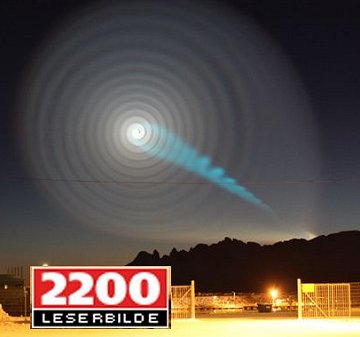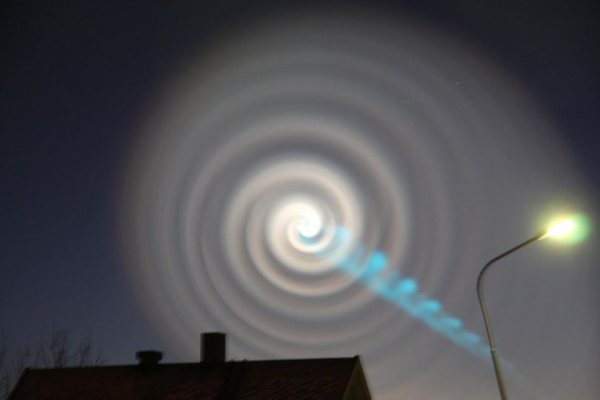In case you didn’t see this on the news: there were some very strange doings high in the sky over Norway this morning (take a peek below the fold). Story here.


In case you didn’t see this on the news: there were some very strange doings high in the sky over Norway this morning (take a peek below the fold). Story here.


11 Comments
It would appear the Russian Defense Industry is experiencing some difficulties.
http://www.msnbc.msn.com/id/34362960/ns/technology_and_science-space
Thanks, JK.
Yes, a malfunctioning Russian missile was what the early reports had suggested. I hadn’t bothered to do my usual spadework this time.
Well, I expect it isn’t a total loss: I imagine our Grucci family will be glad to snap up the remaining stock of those Bulavas, once the price comes down.
I also heard that it was “most likely” a Russian missle launch gone awry. Whatever it was, I’m really curious about the physical explanation for the amazing whirlygig images.
Recognize Bob, I’m no “Rocket Surgeon” but as I understand it (and the news reports tend to support) the first two burners (stages) worked flawlessly. That would permit the machine sufficient altitude that the “usual result” of an ICBM being simply told to “blow yourself up” was not really a viable option.
Better to keep it in one piece so the “what if it lands…” can be fairly well contained.
Mind. I am not making fun of the Russian Defense Industry efforts – demonstrably they have the ability to send fairly large pinwheels to a neighborhood near… did I mention I’ve moved to Moscow?
Oh, I forgot to add. The final stage, the one which would boost it to uh “terminal velocity” likely was of three-nozzle design. Just guessing but I’d wager that at least one, probably two, failed to ignite resulting in … well the apparent result.
JK – I think your suggestion could explain the relatively tight blue spiral (basically, tracing the flight path), but what’s going on with the larger grayish spiral? Is that some sort of auroral effect?
“If” my thesis is correct, I would also expect any fuel that was directed toward the/those malfunctioning engine nozzles to still be pumping toward it’s destination.
Admittedly, I haven’t a clue as to what might be the constituents of that fuel – again, just guessing – but what you mention might be the reaction between that fuel and the atmosphere.
The spiral looks too perfect to have been caused by a spiraling rocket. But, then again, I know nothing about rockets.
Charles?
You did notice I stated “I’m no Rocket Surgeon?” My “guessing?” And then that “grayish spiral” that Bob
mentioned?
There was a missile test. The missile was tested from a Russian submarine (as admitted by the Russians). The Area of Operations would be as expected, North Sea, north of Norway.
For my “guess” to be correct would require not simply an ICBM but rather a MIRV ICBM (that is, a multple targeting ICBM which would “likely” require some degree of “autonomous navigating ability” once the first warhead was delivered. Which, when one considers it, makes sense. Hence, the three nozzle design for the final stage. After all the “airmailed package” is already at cruising altitude.
I myself didn’t really pay attention to it until Bob called me on that “grayish spiral.” Yes. The bright blue spiral is tight and looking at the brighter portions of the “grayish spiral” they’re tight too. But trailing, the “gray” looks winded.
Too very tight and too coincident to be separately occurring phenonoma [sic]. That led me to my “spouting fuel guess” ( which if you look closely – although the light, which today’s digital cameras would heighten the focus on – would leave that “grayish area” rather unfocused.
I’ve been wrong before, expect to be again, might be this time, but heck… there’s been “Strange Stuff Over Norway” and it made it’s way onto Malcolm’s Waka.
What can I say?
Found on YouTube… a 3D simulation of a possible explanation of the spiral shaped light
Sorry, but I screwed up the link to YouTube. Here’s the address to cut-and-paste:
http://www.youtube.com/watch?v=Zx8i5EfmYU4&feature=player_embedded